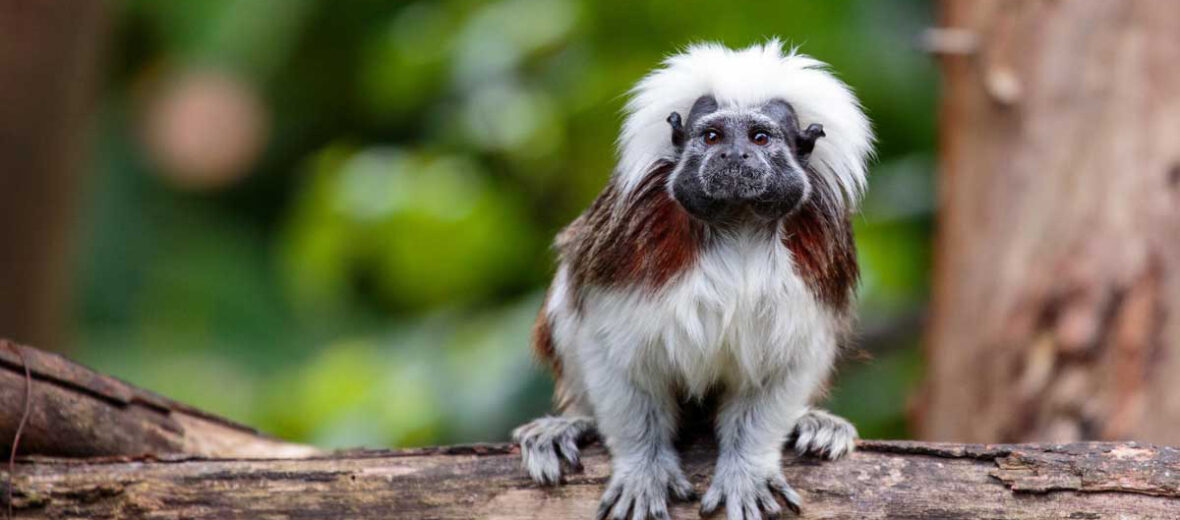
The cotton-top tamarin, aka cotton-headed tamarin, or crested tamarin, is a small primate from northwestern Colombia. They prefer edges of tropical rainforests and secondary forests. However, they can also be found in moist woodland forests, wetland tropical forests, and even dry thorn forest savannahs. Due to habitat destruction at the hands of residential and commercial development, agricultural development, logging, and the construction of dams, these critters have been pushed to the brink of extinction. They are listed as Critically Endangered with an estimated and decreasing population of around 2,000.
First the Stats…
Scientific name: Saguinus oedipus
Weight: Up to 15.2 ounces
Length: Up to 1.8 feet, plus up to a 16 inch tail
Lifespan: Up to 23 years
Now on to the Facts!
1.) Their fingers and toes come equipped with claws, rather than nails. This aids in climbing trees with the best of them.
2.) Being very social critters, these primates can form troops of up to 19 individuals.
3.) Troops are comprised of an alpha male and female and their young. Plus several subordinate males and females. But only the alpha pair are allowed to breed.
4.) These tamarins are highly territorial and mark their territory via feces (poop) and urine.
5.) They occupy an area of 17 – 25 square acres.
But wait, there’s more on the cotton-top tamarin!
6.) When conflicts break out, rather than fight, these tamarins will simply turn around ans show the opponent their butt. This is considered a threatening display.
7.) A group of tamarins is called a barrel, cartload, tribe, troop, or wilderness.
Did you know…?
Snakes, cats, and birds of prey all hunt cotton-top tamarins.
8.) These omnivores (eat plant and animal matter) consume blossoms, fruits, leaves, nectar, sap, insects, spiders, lizards, small tree frogs, and bird eggs.
9.) Cotton-top tamarins are monogamous (mate for life) and breed exclusively with the alpha female.
10.) Females undergo up to a 5 month gestation (pregnancy) that yields up to 2 infants.
But wait, there’s more on the cotton-top tamarin!
11.) Cotton-tops are strictly arboreal (spend their lives in trees). They don’t even descend the trees to drink.
12.) Seeing as they don’t leave the trees, they get most of their water from the foods they eat and from rain water and dew.
13.) When threatened, they will stand erect and raise the hair on their head in an attempt to look larger and more threatening.
14.) This species, like other tamarins, rely on communal parenting. This is where other younger members of the troop will assist in care-giving to the newborns.
Now a Short Cotton-Top Tamarin Video!
Be sure to share & comment below! Also, check out the Critter Science YouTube channel. Videos added frequently!
Want to suggest a critter for me to write about? Let me know here.



